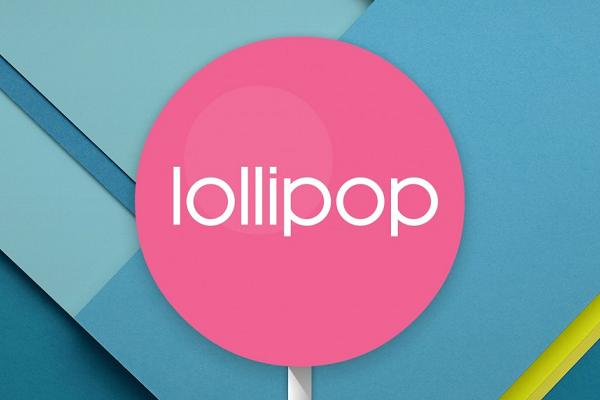Last Updated on April 10, 2017 by Mathew Diekhake
Google is always making themselves busy around the same time of the year as Apple. We recently saw the iPhone release and now the Google-owned Nexus range is coming with the Nexus 6 smartphone and Nexus 9 tablet. As you know, that also means the start of the fresh Android software — in this case the 5.0 Lollipop. Thankfully those of you who own last year’s models are still getting the Lollipop update and it is coming fast compared to other devices that are not under the Mountain View companies name.
What we are doing here is the result of a Google release for the official Android 5.0 SDK and we are installing the file manually using SDK on the computer. The system image is for flashing on Mac, Linux and the most popular which is Windows OS made by the folks out of Redmond better know as Microsoft. Android and Microsoft have a long history of being compatible with updating thanks to the clever tool namely Odin. We always use Odin for flashing stock official firmware updates. However, in this instance we’re flashing a factory image and they are slightly more complex.

- Therefore, we recommend finding experienced users if you are not one yourself. Most rookies will struggle following the complexities of this guide. However, bear in mind that only developers and keen Lollipop enthusiasts should be upgrading using this guide. We know that the main reason for the release of Developer Previews is for the real developers to optimize their apps so that when the new 5.0 software is released, their apps are working seamlessly. Nevertheless, that won’t stop devotees from installing it on their tablets too just to check out what is happening.
- We know that the folks from the Googleplex are releasing this same factory image for the Nexus 5 “hammerhead” and the tablet variant of the Nexus 7 WiFi Razor”. However, the Mountain View company are showing no signs of releasing the image for the GSM variant of the tablet. We are expecting that to come eventually. Hopefully we don’t wait too long since the Lollipop is coming early November according to reports.
- Just like when we always update, we want to backup the tablets data using the internal storage space. Use applications available from Google Play such as Helium for Android. Make duplicates of the phone contacts, SMS texts, MMS texts, video files, music and audio files, pictures from your galleries and device settings so you don’t have to reapply them. The data is automatically wiped so this is a must do unless you want a tablet looking like it’s fresh out of the box. Otherwise you can edit the script file and remove the “-w” value pointing from the fastboot update image-hammerhead-lpx13d.zip.
- Use the SMS backup application to make copies of the text messages you do not want to lose. Use Holo Backup for a free version that can store everything via the desktop with some ADb features.
- A large amount of Droid users install antivirus software on their devices to keep them away from vulnerabilities. In this case, we want to stop the security programs from running until we finish here. Being developers, you know how to do that and you also shouldn’t forget to turn them back on again after you finish. Here’s a friendly reminder for that anyhow. Also, stop firewalls and security programs including anti malware and spyware from running on the computer.
- The final Developer Preview build comes with Android Runtime (ART), improved Notifications, OpenGL ES3.1, Material Design UI idea, new APIs and more. The SDK 5.0 API number is 21 and we are witnessing support for DNG, up-to-the-minute Camera 2.0 API, improved JobScheduler, better performance additional material design themes and more.
- Stop-off at the Developer Options and enable the USB Debugging Mode. That way you can successfully connect to the USB slots on the machine of your choice. It does work for laptops, notebook and desktop computers. Additionally, make sure you have the ASUS USB drivers since this is for the ASUS tablet and no other.
- Do not try this installment on a tablet that isn’t made by the ASUS name. No other manufacturers will work at this time.
- You need Fastboot pre-installed before starting the guide. Fastboot is the manual method for all system and factory images.
How To Update The ASUS Nexus 7 2013 WiFi with Android 5.0 LPX13D Lollipop official Developer Preview
1. Turn the computer on and log in to your personal account.
2. Download the 2013 Nexus 7 WiFi system image from here.
– extract the file to the desktop.
3. Take the USB cable from the charger and use it to plug the tablet into the computer.
4. Turn the 2013 tablet off.
5. Boot it back up into bootloader (Fastboot) mode.
– Press Volume Up and the Power buttons.
– keep holding them until the Fastboot menu appears.
6. Look for the razor-LPX13D folder on the desktop.
7. Paste all the files from the razor folder to the Fastboot directory.
8. Run the file “flash-all.bat” from the image files for Windows users.
– Max and Linux users need to enter “flash-all.sh”.
9 . Do not touch any keys or buttons until the flashing finishes.
10. Wait for the standard boot process to start. It will take longer this time.
